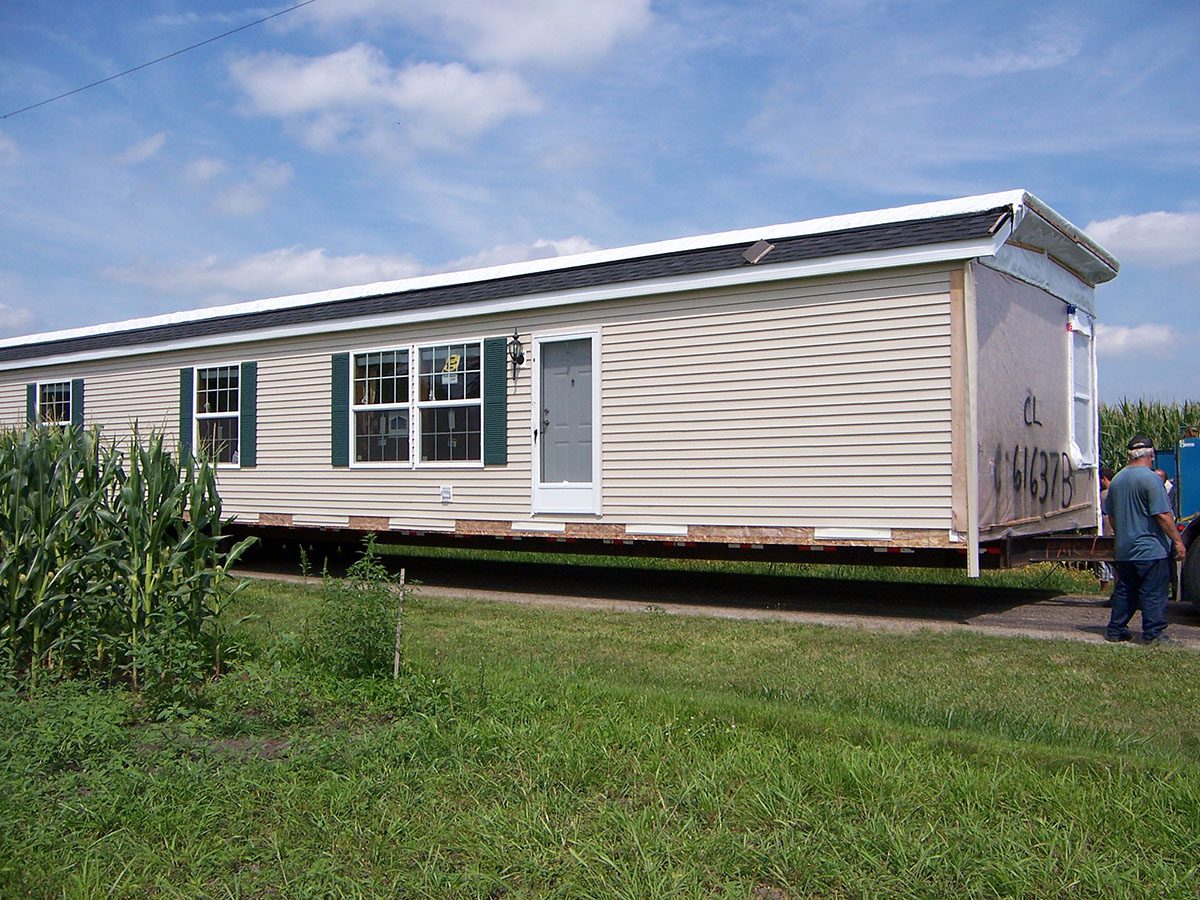
From Fees to Freedom: Richr’s Game-Changing Wealth Strategy in Real Estate, by Jason Rubin, and Glenn Orgin
Have you ever thought about why it costs 6% to…
January 9, 2024
Table of Contents:
Modular Homes Around the World
Are modular homes poor quality?
Are modular homes worth the money?
On what type of foundation do modular homes sit?
What is the difference between a prefab and a modular home?
Why are manufactured homes so cheap?
How long do modular homes last?
From what materials are modular homes made?
What is the difference between a modular home and a sectional home?
How can I make my modular home look better?
How much does it cost to build a modular home?
How much do modular homes cost in Florida?
What is meant by modular construction?
As the housing market continues to be cost-prohibitive in many parts of the country, modular homes could become a more desirable and realistic type of home investment. You should consider weighing the pros and cons before deciding to invest in a modular home
We provide you a free home valuation and a breakdown of your closing costs to show you how much you will save and the amount of cash you will receive at closing
Or Call Us +1844-957-4247
Modular homes are created in a factory, transported to a permanent location, and placed on a concrete foundation with a crane. The sections are transported via semi-truck, then lifted by a crane and joined together. The market for modular homes in the United States in 2019 was valued at $92.18 billion and is expected to reach $128.67 billion by 2023, a compounded annual growth rate of over 7 percent.
These homes offer many options for customization similar to site-built homes, including multiple floorplan types and a range of exterior and interior design styles.
In addition, modular home technology is rapidly improving, resulting in higher quality and much larger homes, up to 3 thousand square feet and two stories. As traditional homes prices surge across the county, the market for modular homes is growing.
Foundation: The foundation of the home needs to be installed perfectly.
The site has to be large enough for a crane to assemble the house, and the foundation needs to be perfectly level.
Modular homes are just starting to see a rise in popularity in the United States. Other countries, such as Scandinavia and Japan, have fully adopted modular construction. Several factors in these countries led to the increased adoption of modular homes.
These primary issues include:
These factors lead to higher costs of traditional homes. They are currently impacting the home buying market in the United States, making modular construction an increasingly attractive alternative to stick-built houses.
Modern modular homes are high quality and increase in value over time, similar to site-built homes. As with any home, location should be considered when selecting a site for a modular home. Also, maintaining the house and keeping it clean will make the home much more likely to re-sell.
it’s time to buy smarter. Richr gives you cashback helping you buy the home of your dreams.
You’ll get a full-service concierge agent.
You’ll get cash back at closing.
We will support you with your title and homeowners insurance nee
Call us now on 1-844-957-4247 or Start Searching Your Home Now!
Modular homes are definitely worth the expense. They increase in value over time, unlike mobile homes, and make for a great home. When investing in a new home, it is essential to look for homes that will keep their value so you can gain more equity and re-sell the house as needed at a higher price.
Modular homes sit on a basement or crawl space foundation. The fabricated sections of the house attach to a block or poured wall and then are filled in for the home to be secure.
A modular home is a prefabricated or prefab home. Prefabricated means the house is built somewhere other than the home’s site. This includes multiple home types, including modular homes, mobile homes, and manufactured homes. Modular homes are meant to be permanent homes. They do not move and increase in value over time, making them the best and highest quality prefabricated type of home.
They are cheap because they are built on assembly lines in a factory with limited customizations. Many are made of lower quality materials than traditional stick-built homes.
The largest manufacturer in the United States is Clayton Homes, with approximately 41 percent market share. Clayton Homes is owned by Warren Buffett’s business Berkshire Hathaway. The company is headquartered in Maryville, Tennessee, and builds homes around the country. The other top builders include Champion Homes and Cavco Homes. Champion Homes is located in Troy, Michigan, and manufactures homes throughout the United States and Europe. Cavco Homes is located in Seguin, Texas, and prides itself on its value for home buyers.
It depends on what you are seeking in a home. Suppose you desire a fully custom home with the highest quality materials available, then prefabricated homes are not a good investment. However, prefabricated, modular homes may be the best route to take when buying a home for those on a budget. The modular homes may also serve as a good investment for rental purposes. Home rental prices are increasing around the country, and renters may be more interested in cheaper yet still quality homes.
Modular homes can last anywhere from 30 to 55 years if maintained well.
Modular homes vary from manufactured homes in that they are made in multiple sections instead of one sizeable complete structure. In addition, the walls are constructed from vinyl on vinyl-on-gypsum (VOG) instead of drywall found in traditional construction homes. Vinyl on gypsum is a gypsum wall held together by a laminated vinyl coating. It is water repellent and used in most types of manufactured housing.
Sectional homes sit on a steel frame and can be moved. Modular homes are on a permanent structure and are not expected to be relocated.
Landscaping and maintenance are great ways to make your home stand out and look unique and maintain the quality of the house over time.
Modular homes, prefabricated (prefab) homes, are very durable. They are more durable than other prefab homes such as mobile homes and excellent at retaining their value over time.
A modular home price can cost anywhere between $120,000 and $270,000. The price varies greatly on the size of the home and customizations.
The average price of a modular home in Florida is $150,000 for an 1800 square foot home. That is a little over $83 per square foot. The average cost for a standard home in Jacksonville, Florida, is around $280,000.
Therefore, buying a modular home in Florida will save you, on average, $130,000.
Modular construction is when a home is built off-site in modules, still to code, and in an assembly line with multiple sections of homes.
Florida has strict building codes that also apply to modular homes, making them some of the safest homes to buy. There are also stringent installation codes and safety inspections that must be followed.
Here are some helpful keywords to keep in mind when learning about modular homes.
Prefabricated Home: A home built on a different site than the land on which it will sit. Modular, mobile, and manufactured homes are all types of prefabricated homes.
Ground-up Construction: Ground-up construction is when a home is built from scratch with no existing foundation, walls, or other structures.
Stick-Built Home: A stick-built home is a wood house built on a permanent site.
Site- Built Home: A home site-built home is a home built on the place on which it will permanently sit.
Modular Home: A prefabricated home built in sections in a factory then transported and assembled on a permanent site on a concrete foundation.
Manufactured Home: A type of prefabricated home built in a factory, constructed off-site, and tied to a steel chassis for the ability to be moved. Once on-site, concrete is poured around and under the home.
The intent is for the house to remain in the location permanently. These types of homes are most often HUD homes.
Mobile Home: A mobile home is a pre-made home in a factory, tied to a chassis and built for ease of mobility from one site to the next.
Sectional Home: Mobile homes or “double-wides” are constructed as two separate pieces and then placed together. This type of home is larger than a typical mobile home.
it’s time to buy smarter. Richr gives you cashback helping you buy the home of your dreams.
You’ll get a full-service concierge agent.
You’ll get cash back at closing.
We will support you with your title and homeowners insurance nee
Call us now on 1-844-957-4247 or Start Searching Your Home Now!
Purchasing a new home is never easy, especially with budget restraints.
The technology has improved the quality and safety of modular homes drastically over the past several years.
Weighing the pros and cons should be considered when deciding to invest in a modular home. The situation will be unique to each buyer. Working with a home builder who has experience building modular homes is recommended for first-time homebuyers looking to buy a modular home. As the housing market continues to be cost-prohibitive in many parts of the country, modular homes could become a more desirable and realistic type of home investment.
If you’re looking to buy or sell a house and would like to discuss your option, Richr can help you!
Our fully licensed Concierge Team is here to questions and provide free, objective advice on how to get the best outcome with your sale and purchase.
Ready to get started?
Call us now on 1-844-957-4247 or enter your basic info
below. Our concierge Team will be in touch shortly to help.
Remember, this service is 100% free and there’s never any obligation.

If you want the Richr team to help you save thousands on your home just book a call.
 Book a call
Book a call